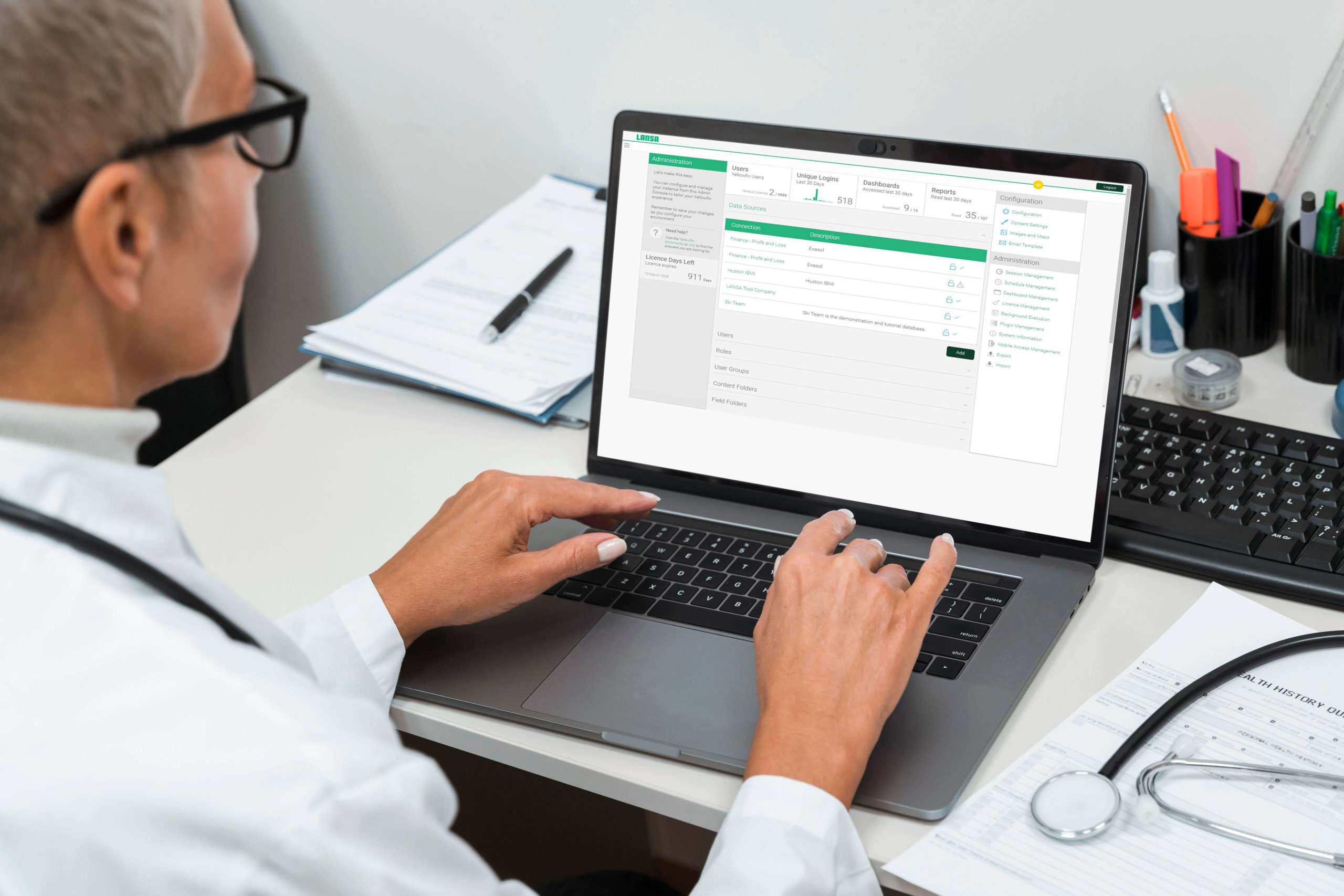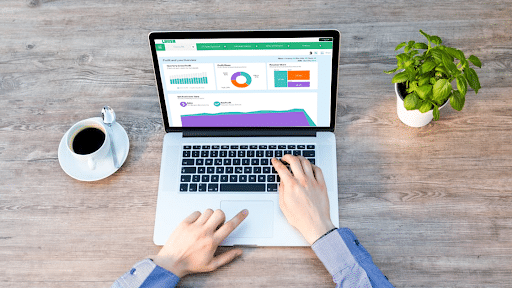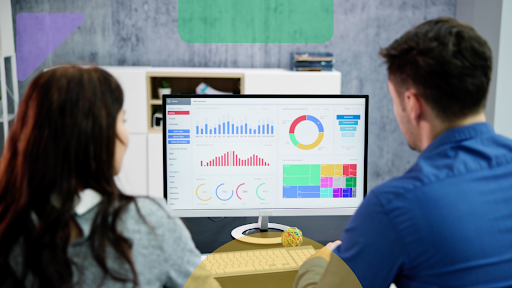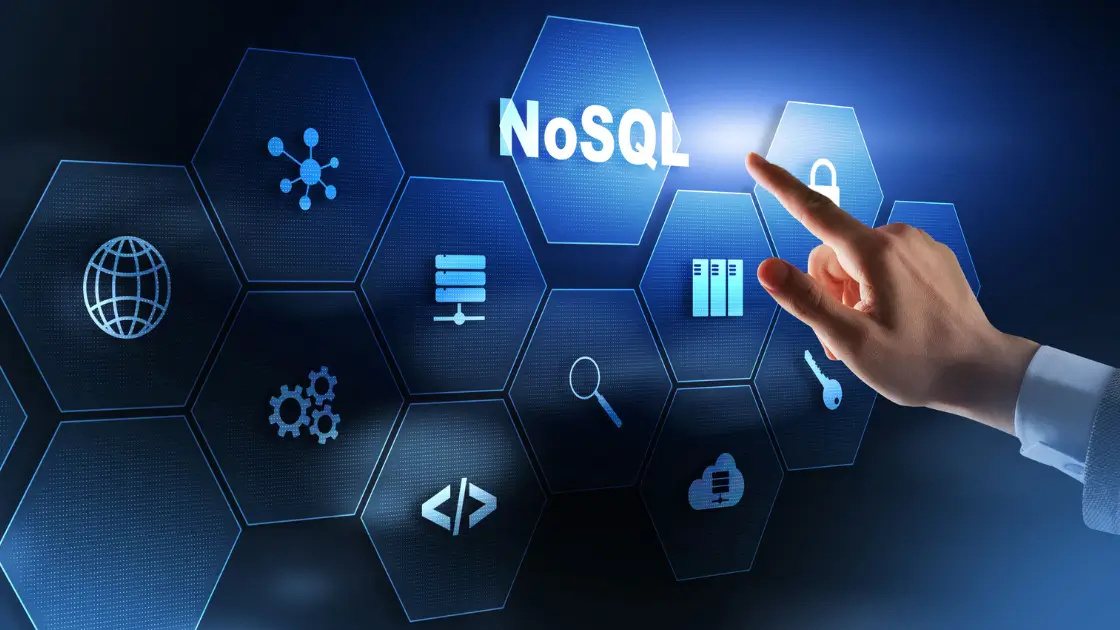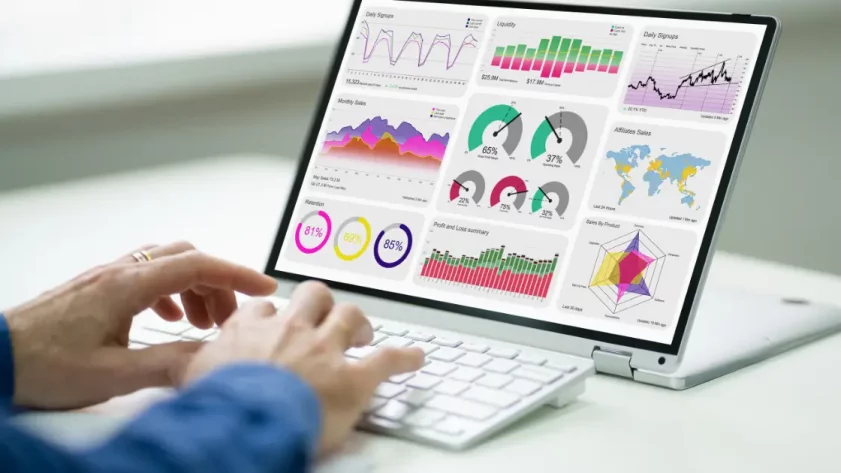With more and more businesses relying on data for their decision-making process, integrating different data sources into BI solutions has become vital to gaining meaningful insights. Furthermore, the integration of different data sources into business intelligence tools can not only enable organizations to harness the power of diverse datasets, but can also help companies to unlock analytics capabilities. One such integration is between IBM Db2 and LANSA BI, two powerful tools that, when combined, offer enhanced capabilities and streamlined data analysis workflows. Used by organizations of all sizes, Db2, or database 2, is a relational database management system that helps in storing, analyzing, and retrieving data efficiently.
Integration with IBM Db2 enables organizations to extract, transform, and load large volumes of data from their databases into LANSA BI. Not to mention, this synergy between Db2 and LANSA BI brings forth a host of benefits, including, but not limited to, streamlined data management, enhanced security, improved data quality, and many more.
LANSA BI and Db2: A match made in heaven!
With organizations increasingly relying on actionable insights to make critical business decisions, the collaboration between Db2 and LANSA BI enables a holistic and unified approach to data integration, analytics, and data management. By leveraging the power of these Db2 and LANSA BI, organizations can drive innovation, uncover new opportunities, and stay ahead of the competition in an increasingly data-centric landscape. Let’s take a moment to understand the benefits of integrating IBM Db2 into LANSA BI.
1. Streamlines data management processes
Traditionally, organizations had to rely on manual data extraction and loading (ETL) processes to move data from their databases to their BI tools. This approach not only consumed valuable time but also posed the risk of data inaccuracies and inconsistencies.
Integration of Db2 into LANSA BI resolves this problem. It enables businesses to extract real-time data and perform analysis, eliminating the need for ETL jobs. It means businesses can make faster, data-driven decisions without worrying about data staleness or errors caused by manual data manipulation. For example, a retail company can use this integration to automatically extract sales data from their Db2 database and create sales dashboards in LANSA BI. It not only helps them in providing real-time insights, but also helps them in improving decision-making and driving business growth.
2. Improves data quality
In addition to streamlining data management processes, integrating Db2 into LANSA BI can also help improve data quality and consistency. With Db2’s centralized data repository, multiple users can access and work on the same dataset simultaneously within LANSA BI. This integration promotes collaboration, improves data accuracy, and streamlines decision-making by providing real-time insights to all stakeholders involved. For instance, a retail company can use LANSA BI to analyze sales data. By integrating Db2, businesses using LANSA BI can effortlessly cross-reference sales records with inventory levels, ensuring that reported sales figures are always up-to-date and accurate. Moreover, data anomalies, such as duplicate entries or missing information, can be easily identified and rectified.
3. Enhances security and data governance
It goes without saying that data security and governance are paramount concerns for organizations, especially when dealing with sensitive information. By centralizing data in Db2 databases, organizations can implement robust security measures and access controls. It ensures that sensitive information remains protected and data compliance requirements are met.
Moreover, Db2 provides auditing and monitoring capabilities, which enable organizations to track data access and changes. It helps businesses maintain data integrity and ensure compliance with internal policies and external regulations. For example, a healthcare organization could integrate Db2 with LANSA BI to enhance patient data security. In this way, they can ensure that only authorized medical professionals can access and analyze patient records. It not only safeguards sensitive healthcare information, but also maintains compliance with strict privacy regulations like HIPAA.
4. Facilitates data sharing
Collaboration is key to driving innovation and achieving business goals. By integrating Db2 into LANSA BI, organizations can foster seamless collaboration and data sharing among team members. Not to mention, with Db2’s integration, multiple team members can access and work on the same data simultaneously. This real-time collaboration feature enables teams to collaborate on reports, dashboards, and analyses, ensuring everyone is on the same page and working with the most up-to-date information. It can lead to faster decision-making and improved teamwork, which ultimately drives better business outcomes. Furthermore, integrating Db2 into LANSA BI enables the organization to easily share insights and reports with external stakeholders, such as clients or partners.
For example, a marketing team within a retail organization can use LANSA BI integrated with Db2, allowing their team members to access and analyze customer data simultaneously. This collaborative environment will enable marketers to quickly identify trends, segment customer groups, and design targeted marketing campaigns in real-time. Needless to say, It can lead to more effective customer engagement and improved sales outcomes. Furthermore, integrating Db2 into LANSA BI enables the organization to easily share insights and reports with external stakeholders, such as clients or partners.
How to integrate Db2 into LANSA BI
Integrating IBM Db2 into LANSA BI requires a systematic approach to ensure seamless data flow and optimal performance. However, before integrating Db2 into LANSA BI, you have to keep two important factors in mind, namely, checking the version of IBM Db2 and providing full access to the Db2 database. By checking the Db2 version, you can ensure its compatibility with LANSA BI for smooth integration. Granting full access permissions to LANSA BI ensures that it can interact seamlessly with the Db2 database, retrieving and manipulating data as needed for effective business intelligence processes. Once you have verified the compatibility and ensured full access to the Db2 database, you are all set to integrate Db2 into LANSA BI, allowing for an efficient data integration process.
Step 1: Creating a data source connection
To harness the full potential of IBM Db2 within LANSA BI, creating a data source connection is important. This connection serves as the bridge that enables LANSA BI to retrieve results and populate them into reports. Through this connection, LANSA BI gains secure access to the data stored in your Db2 database, laying the groundwork for seamless data retrieval, analysis, and reporting.
A Data Source record in LANSA BI contains the connection details the system uses to access source data for reporting. Connections are then used by Views to provide tables and fields. Through the Admin Console, you will be able to create new data sources and manage the security access to these connections.
LANSA BI supports several other data sources including SQL databases. It provides intuitive tools and interfaces to configure this connection seamlessly (e.g. JDBC connection). You can select the connection method that best aligns with your requirements.
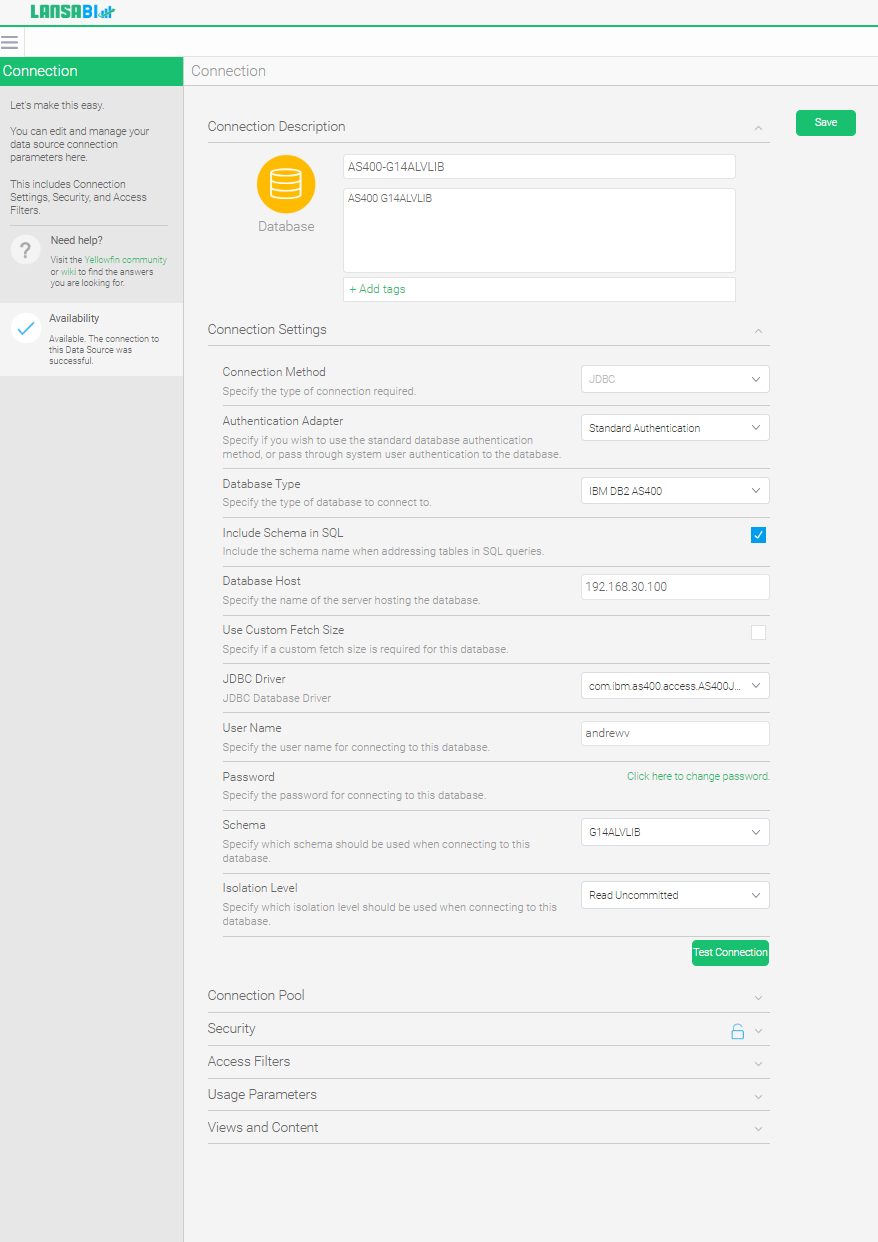
Step 2: Preparing data using views
After you have defined your data source, you need to create a view over the selected database to prepare data for report building. Data preparation is a vital process that allows you to transform your data into consistent formats suitable for exploration, analysis, and report building. LANSA BI’s view over a database is used to define relationships between tables in the database over which you want to build the reports. You can create a view based on an existing data source or from a new one that you can connect to. By using a view, the end user can automatically access data within their system and build dashboards, data stories, and reports.
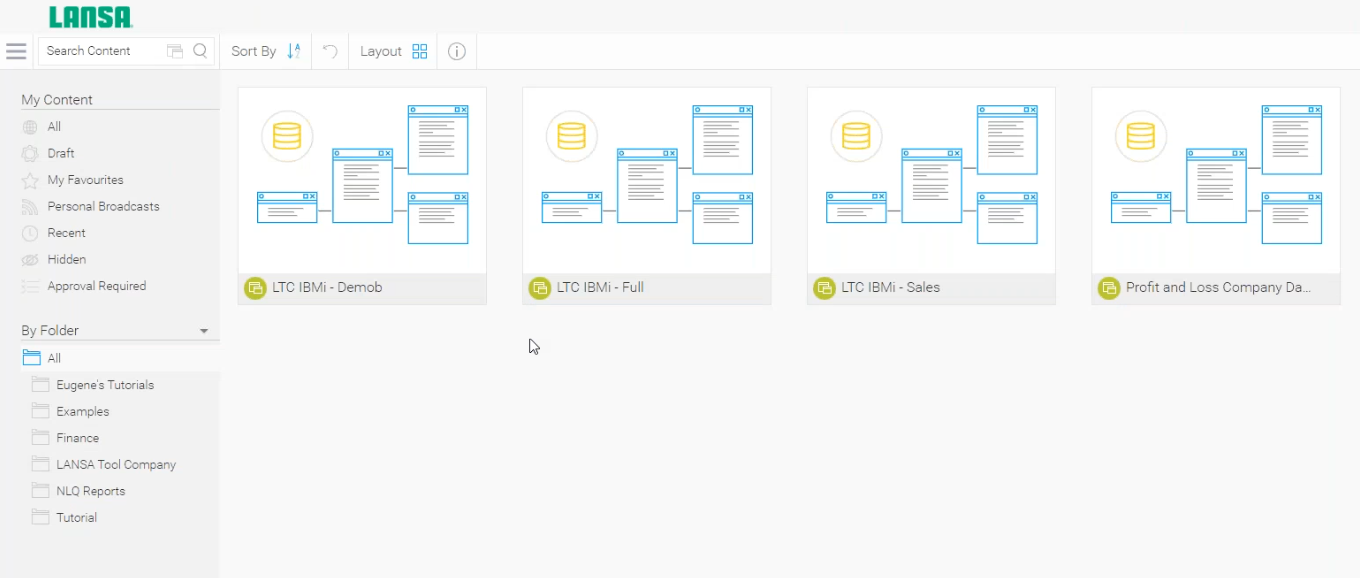
Step 3: Create custom reports and dashboards using IBM Db2 in LANSA BI
With the data securely integrated into LANSA BI, organizations can create custom reports and dashboards tailored to their unique needs and objectives. LANSA BI provides a user-friendly interface that allows you to design visually appealing and interactive reports effortlessly. Users can select the relevant data fields, apply filters, and customize visualization elements to craft meaningful reports and dashboards. Whether it’s generating detailed financial reports, monitoring key performance indicators, or visualizing trends, LANSA BI empowers organizations to unlock the full potential of their IBM Db2 data.
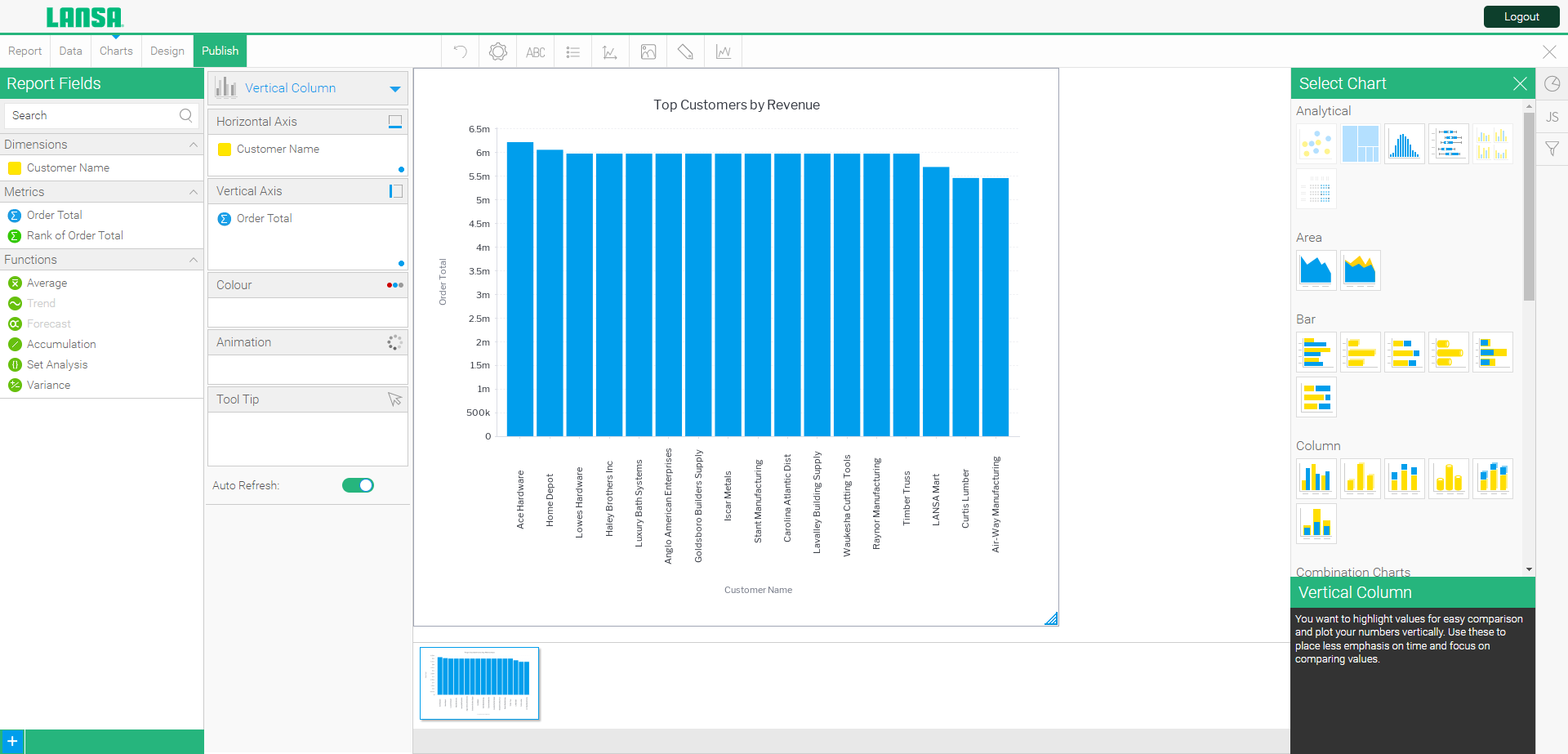
Access data from other databases in LANSA BI with ease
Integrating IBM Db2 into LANSA BI opens up a world of possibilities for organizations seeking to unlock the full potential of their data. By seamlessly integrating these two powerful tools, businesses can leverage the robust capabilities of Db2 while harnessing the ease of use and familiar interface of LANSA BI.
Db2’s advanced query optimization, indexing, and caching techniques enable faster query execution, which reduces the time to extract insights from vast datasets. Furthermore, this integration enables LANSA BI to use the data from multiple sources and make data-driven decisions easily. By leveraging the power of Db2 and LANSA BI, organizations can streamline their reporting and analysis processes and enable users to make data-driven decisions more efficiently.
Recommended: See how DB2 works with LANSA BI in action! Watch the recorded webinar here.
Elevate your business insights with seamless Db2 integration into LANSA BI
Are you ready to elevate your business intelligence to new heights? Integrate Db2 into your LANSA BI and experience a wealth of powerful data insights and analytics capabilities.
Connect Db2 to LANSA BI today and streamline your data analytics processes, gain deeper insights into your organization’s performance, and make data-driven decisions with confidence. Contact us today to transform the way you analyze your business data.


